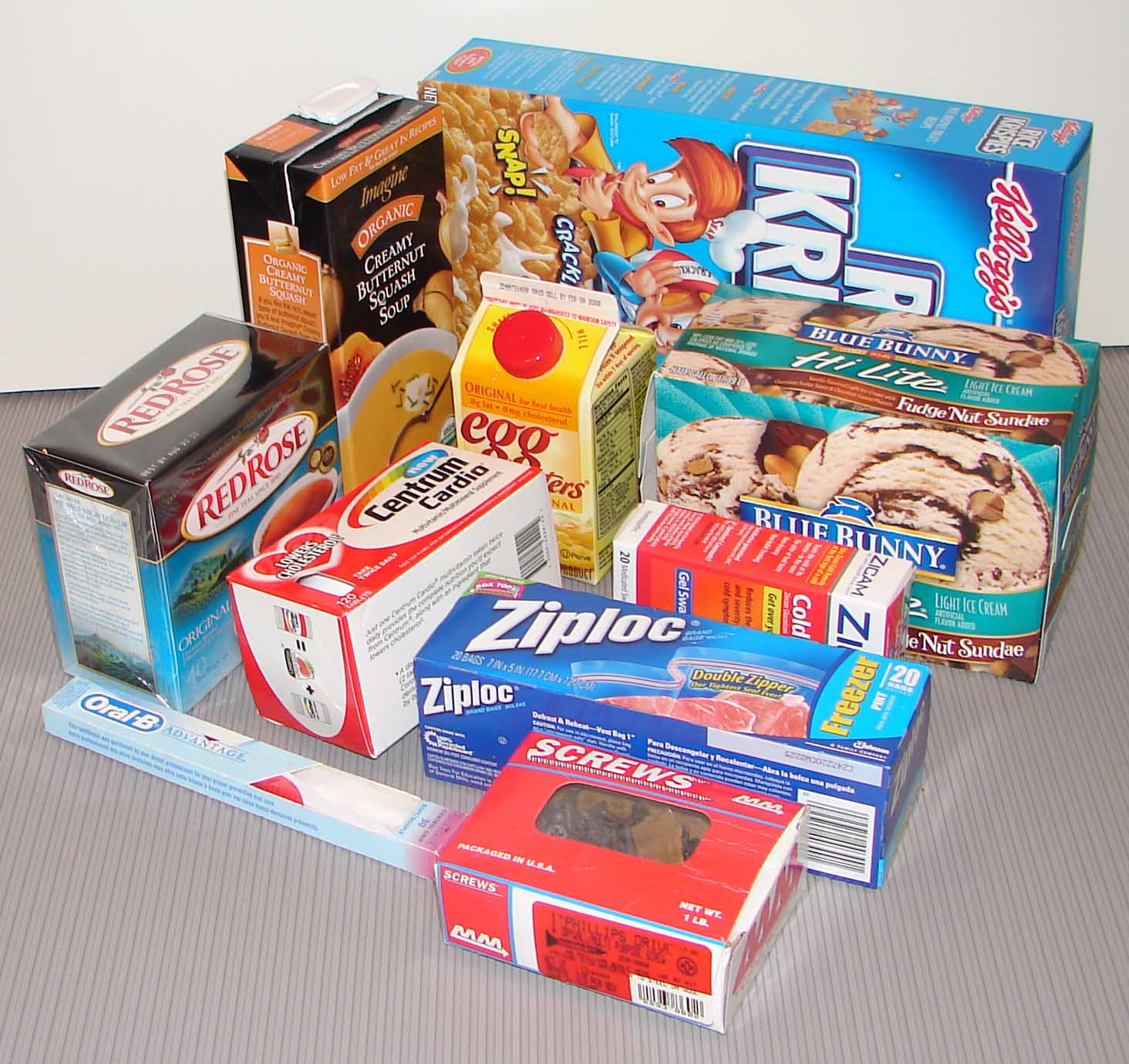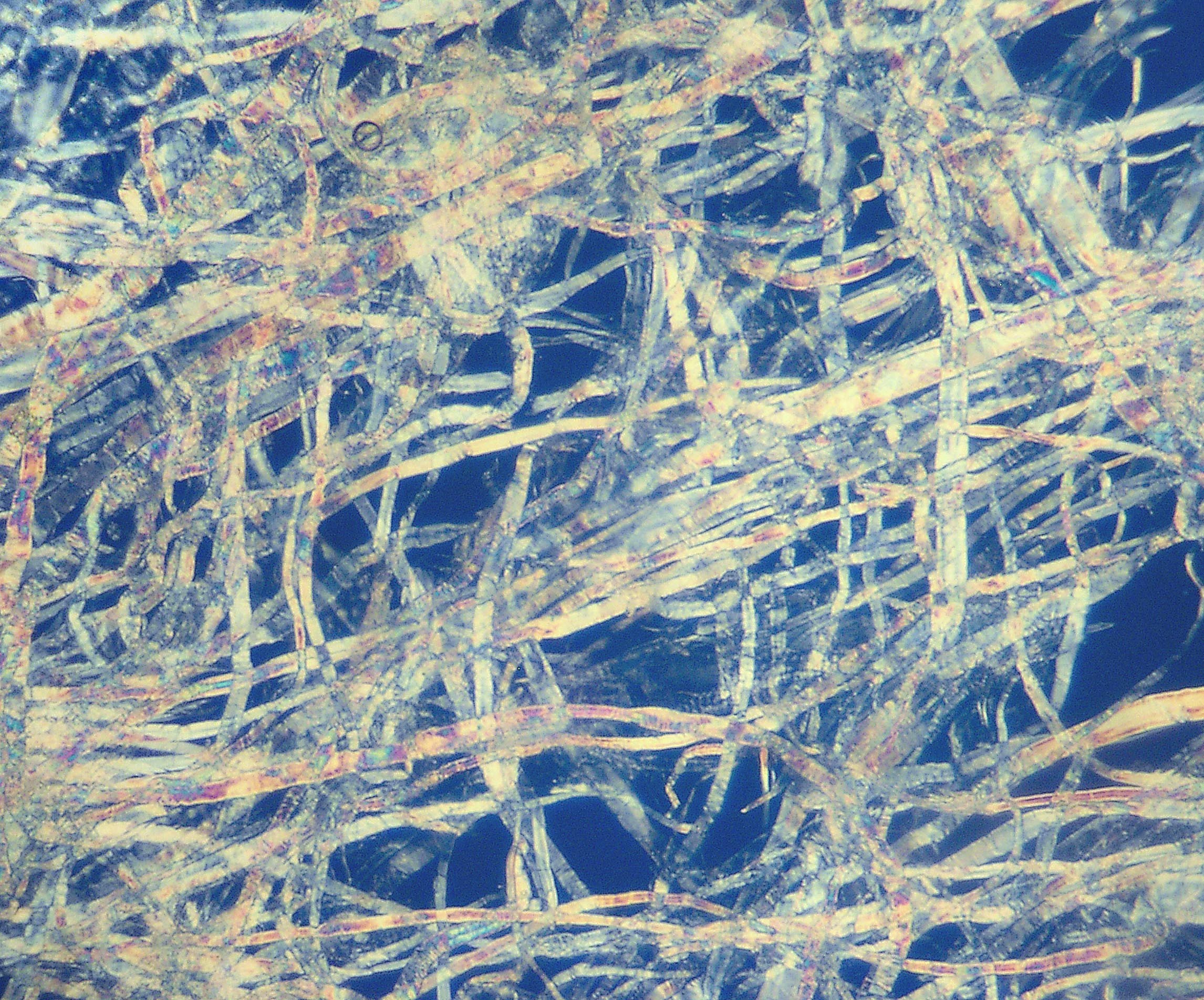|
Illustration Board
Paperboard is a thick paper-based material. While there is no rigid differentiation between paper and paperboard, paperboard is generally thicker (usually over 0.30 mm, 0.012 in, or 12 points) than paper and has certain superior attributes such as foldability and rigidity. According to ISO standards, paperboard is a paper with a grammage above 250 g/m2, but there are exceptions. Paperboard can be single- or multi-ply. Paperboard can be easily cut and formed, is lightweight, and because it is strong, is used in packaging. Another end-use is high quality graphic printing, such as book and magazine covers or postcards. Paperboard is also used in fine arts for creating sculptures. Sometimes it is referred to as ''cardboard'', which is a generic, lay term used to refer to any heavy paper pulp–based board, however this usage is deprecated in the paper, printing, and packaging industries as it does not adequately describe each product type. History In 1817, the first paperboard carto ... [...More Info...] [...Related Items...] OR: [Wikipedia] [Google] [Baidu] |
Cardboard All Flutes
Cardboard is a generic term for heavy paper-based products. Their construction can range from a thick paper known as paperboard to corrugated fiberboard, made of multiple plies of material. Natural cardboards can range from grey to light brown in color, depending on the specific product; dyes, pigments, printing, and coatings are available. The word ''cardboard'' has general use in English and French, but the term is deprecated in commerce and industry as not adequately defining a specific product. Material producers, container manufacturers, packaging engineers, and standards organizations, use more specific terminology. Usage statistics In 2020, the United States hit a record high in its yearly use of cardboard. Over 120 billion pieces were used that year, with around 80 percent of all the products sold in the United States being packaged in cardboard. In the same year, over 13,000 separate pieces of consumer cardboard packaging were thrown away by American households, comb ... [...More Info...] [...Related Items...] OR: [Wikipedia] [Google] [Baidu] |
Folding Carton
The folding carton created the packaging industry as it is known today, beginning in the late 19th century. The process involves folding carton made of paperboard that is printed, laminated, cut, then folded and glued. The cartons are shipped flat to a packager, which has its own machinery to fold the carton into its final shape as a container for a product. Some styles of folding cartons can be made of E-flute or micro-flute corrugated fiberboard. The folding carton industry does not figure importantly in world trade, although the United States exports considerable quantities of canned foods and other products in folding cartons. The volume of folding carton exports shipped flat is relatively low, amounting to less than 0.5 percent of U.S. production. Invention and development In the 1840s, cartons were made by hand and held together with tacks and string, and used only for expensive items (such as jewellery). Although Charles Henry Foyle is described by some as the "inve ... [...More Info...] [...Related Items...] OR: [Wikipedia] [Google] [Baidu] |
Timber
Lumber is wood that has been processed into uniform and useful sizes (dimensional lumber), including beams and planks or boards. Lumber is mainly used for construction framing, as well as finishing (floors, wall panels, window frames). Lumber has many uses beyond home building. Lumber is referred to as timber in the United Kingdom, Australia, and New Zealand, while in other parts of the world, including the United States and Canada, the term ''timber'' refers specifically to unprocessed wood fiber, such as cut logs or standing trees that have yet to be cut. Lumber may be supplied either rough- sawn, or surfaced on one or more of its faces. ''Rough lumber'' is the raw material for furniture-making, and manufacture of other items requiring cutting and shaping. It is available in many species, including hardwoods and softwoods, such as white pine and red pine, because of their low cost. ''Finished lumber'' is supplied in standard sizes, mostly for the construction ind ... [...More Info...] [...Related Items...] OR: [Wikipedia] [Google] [Baidu] |
Paper Recycling
The recycling of paper is the process by which waste paper is turned into new paper products. It has several important benefits: It saves waste paper from occupying the homes of people and producing methane as it breaks down. Because paper fibre contains carbon (originally absorbed by the tree from which it was produced), recycling keeps the carbon locked up for longer and out of the atmosphere. Around two-thirds of all paper products in the US are now recovered and recycled, although it does not all become new paper. After repeated processing the fibres become too short for the production of new paper, which is why virgin fibre (from sustainably farmed trees) is frequently added to the pulp recipe. Three categories of paper can be used as feedstocks for making ''recycled paper'': mill broke, pre-consumer waste, and post-consumer waste. ''Mill broke'' is paper trimmings and other paper scraps from the manufacture of paper, and is recycled in a paper mill. ''Pre-consumer waste' ... [...More Info...] [...Related Items...] OR: [Wikipedia] [Google] [Baidu] |
Pulp (paper)
Pulp is a fibrous Lignocellulosic biomass, lignocellulosic material prepared by chemically, semi-chemically, or mechanically isolating the cellulose fiber, cellulosic fibers of wood, fiber crops, Paper recycling, waste paper, or cotton paper, rags. Mixed with water and other chemicals or plant-based additives, pulp is the major raw material used in papermaking and the industrial production of other Pulp and paper industry, paper products. History Before the widely acknowledged invention of papermaking by Cai Lun in China around AD 105, paper-like writing materials such as papyrus and amate were produced by ancient civilizations using plant materials which were largely unprocessed. Strips of Bark (botany), bark or Bast fibre, bast material were woven together, beaten into rough sheets, dried, and polished by hand. Pulp used in modern and traditional papermaking is distinguished by the process which produces a finer, more regular slurry of cellulose fibers which are pulled out of ... [...More Info...] [...Related Items...] OR: [Wikipedia] [Google] [Baidu] |
Takon Kartonkitehdas Tammerkoski
Takon is an arrondissement in the Plateau department of Benin. It is an administrative division under the jurisdiction of the commune of Sakété. According to the population census conducted by the Institut National de la Statistique Benin An institute is an organizational body created for a certain purpose. They are often research organisations (research institutes) created to do research on specific topics, or can also be a professional body. In some countries, institutes ca ... on February 15, 2002, the arrondissement had a total population of 10,424. accessed b Geohive accessed 4 June 2012 References [...More Info...] [...Related Items...] OR: [Wikipedia] [Google] [Baidu] |
Bookbinding
Bookbinding is the process of building a book, usually in codex format, from an ordered stack of paper sheets with one's hands and tools, or in modern publishing, by a series of automated processes. Firstly, one binds the sheets of papers along an edge with a thick needle and strong thread. One can also use loose-leaf rings, binding posts, twin-loop spine coils, plastic spiral coils, and plastic spine combs, but they last for a shorter time. Next, one encloses the bound stack of paper in a cover. Finally, one places an attractive cover onto the boards, and features the publisher's information and artistic decorations. The trade of bookbinding includes the binding of blank books and printed books. Blank books, or stationery bindings, are books planned to be written in. These include accounting ledgers, guestbooks, logbooks, notebooks, manifold books, day books, diary, diaries, and sketchbooks. Printed books are produced through letterpress printing, offset printing, offset litho ... [...More Info...] [...Related Items...] OR: [Wikipedia] [Google] [Baidu] |
Corrugated Fiberboard
Corrugated fiberboard, corrugated cardboard, or corrugated is a type of packaging material consisting of a fluted corrugated sheet and one or two flat linerboards. It is made on "flute lamination machines" or "corrugators" and is used for making corrugated boxes. The corrugated medium sheet and the linerboard(s) are made of kraft containerboard, a paperboard material usually over thick. History Corrugated (also called pleated) paper was patented in England in 1856, and used as a liner for tall hats, but corrugated boxboard was not patented and used as a shipping material until 20 December 1871. The patent was issued to Albert Jones of New York City for single-sided (single-face) corrugated board. Jones used the corrugated board for wrapping bottles and glass lantern chimneys. The first machine for producing large quantities of corrugated board was built in 1874 by G. Smyth, and in the same year Oliver Long improved upon Jones' design by inventing corrugated board with lin ... [...More Info...] [...Related Items...] OR: [Wikipedia] [Google] [Baidu] |
Solid Unbleached Board
Solid unbleached board, also known as SUB, is a grade of paperboard typically made of unbleached chemical pulp. Most often it comes with two to three layers of mineral or synthetic pigment coating on the top and one layer on the reverse side. Recycled fibres are sometimes used to replace the unbleached chemical pulp. The main end use for this type of board is for packaging of frozen or chilled food, beverage carriers, detergent cereals, shoes, toys and others. See also *Folding boxboard *Solid bleached board Solid bleached board (SBB) or solid bleached sulphate (SBS) is a virgin fibre grade of paperboard. This grade is made purely from bleached chemical pulp and usually has a mineral or synthetic pigment coated top surface in one or more layers (C1 ... * White lined chipboard Further reading Antidumping DutyFaltkarton(in German) An overview of paper and paper based food packaging materials: health safety and environmental concerns References Paperboard Coated paper ... [...More Info...] [...Related Items...] OR: [Wikipedia] [Google] [Baidu] |
Solid Bleached Board
Solid bleached board (SBB) or solid bleached sulphate (SBS) is a virgin fibre grade of paperboard. This grade is made purely from bleached chemical pulp and usually has a mineral or synthetic pigment coated top surface in one or more layers (C1S) and often also a coating on the reverse side (C2S). It is a medium density board with good printing properties for graphical and packaging end uses and is perfectly white both inside and out. It can easily be cut, creased, hot foil stamped and embossed. Its other properties, such as being hygienic and pure with no smell and taste, make it usable for packaging aroma and flavour sensitive products such as chocolate, cigarettes and cosmetics Cosmetics are substances that are intended for application to the body for cleansing, beautifying, promoting attractiveness, or altering appearance. They are mixtures of chemical compounds derived from either Natural product, natural source .... Solid Beached Board (SBB) and Solid Bleached S ... [...More Info...] [...Related Items...] OR: [Wikipedia] [Google] [Baidu] |
Liquid Packaging Board
Liquid packaging board is a multi-ply paperboard with high stiffness, strong wet sizing and a high barrier coating, e.g. plastic. Only virgin paper fibers are used. The barrier coating must hold the liquid and prevent migration of air and flavors through the paperboard. Manufacture A liquid packaging board might be up to five plies and is formed on a multi-ply paper machine with online coating. The most common is to use three plies with a basis weight of about 300 g/m2. The base or middle ply is normally made of pulp from bleached or unbleached chemical pulp, chemi-thermo-mechanical pulp (CTMP) or ''broke'' (waste paper from a paper machine). CTMP gives more bulk and stiffness. The top ply (inside) is made of bleached chemical pulp. The barrier coating depends on the application and might be applied on both sides. When induction welding is employed an aluminum foil layer is used for barrier protection and for heating. The back side of the board is the printing side and m ... [...More Info...] [...Related Items...] OR: [Wikipedia] [Google] [Baidu] |







